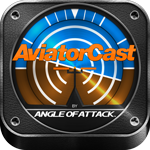
The Aircraft Owners and Pilot’s association conducted a survey amongst themselves to see what technique they most commonly used to land in a crosswind. The results were anonymous, and this brings us to the third and final method: The Decrab!
My reasoning to do this in two parts is largely due to the composition of the decrab method. It’s a combination of both a crab and a slip, therefore requiring the pilot to have mastered both before attempting to combine them in practicing the decrab method.
HOW IT’S DONE

AIRCRAFT LIMITATIONS
All airplanes have limitations, and it’s your job as its pilot to know what they are. With enough of a crosswind, an airplane will eventually “run out of rudder.” This just implies that even with a full rudder deflection, there still isn’t enough input to keep the aircraft aligned with the centerline of the runway. Be sure to reference the aircraft’s POH for limitation information.

DOWNLOAD CHART
ALTERNATES
So what can you do if the winds are outside of your comfort level? Another perfectly acceptable course of action is to divert to an airport with a runway more favorably aligned with the wind. If you don’t feel comfortable, then this is the safest course of action. Don’t ever be ashamed to do this. Remember to always set your own personal minimums and always have a plan B… and C… and D… and enough fuel to achieve them, if needed.
Once again, I encourage you all to go crank up the simulator winds and give this a shot. Let me know how it goes! Until then…
Throttle On!
Mathew Young
Cincinnati, OH

![]()
Join the Conversation!
What are your own personal minimums for crosswind landings and why is it so important to establish these?
This article was posted in AOA, Aviation, Blog, Challenges, Flight Simulator, Flightsim Tips, Microsoft Flight, Real World
Please note: We reserve the right to delete comments that are snarky, offensive, or off-topic. If in doubt, read the Comments Policy.

